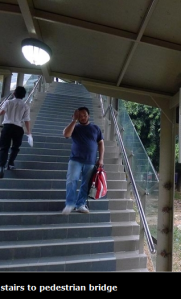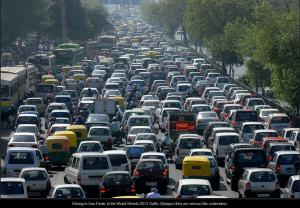6.1 Pedestrian Overpasses
A pedestrian overpass allows pedestrians safe crossing over busy roads without impeding traffic.
 There was a time that these grafted bits or road-related infrastructure seemed to make sense. A mark of that time was the implicit assumption that “traffic” meant cars and that it made perfect sense to give them priority over pedestrians, cyclists and anybody else who might wish to cross a busy road. That time has now passed.
There was a time that these grafted bits or road-related infrastructure seemed to make sense. A mark of that time was the implicit assumption that “traffic” meant cars and that it made perfect sense to give them priority over pedestrians, cyclists and anybody else who might wish to cross a busy road. That time has now passed. --> Read on:
--> Read on:













